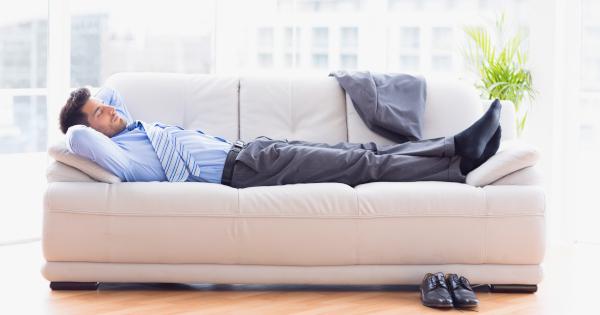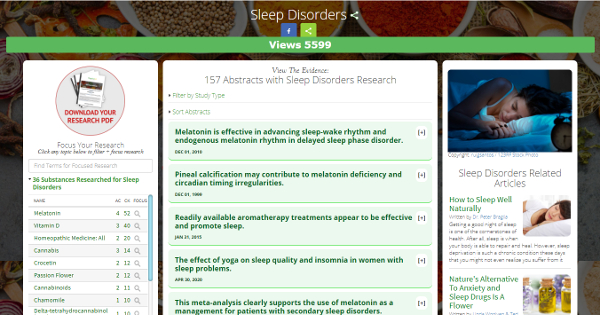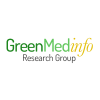Originally published on: November 13th 2023
Wondering if a daytime nap is a smart move? Research suggests a mid-day siesta may improve your memory, cognitive function, athletic performance and more
In many cultures, napping is an integral part of society. The Mexican siesta or Italian riposo refers to a midday break during which people eat, spend time with family and rest, including taking a nap.
In Japan, the term “inemuri” means “to be asleep while present”[i] and is used to describe a quick nap during work or in another public place, like on a commuter train. In the U.S., many take “power naps” to get through their workday.
It’s estimated that 80.7% of U.S. adults have napped for at least 10 minutes in the past three months. For 30.5%, however, napping occurs more than once a week.[ii] There’s some controversy over napping, as the practice has been linked to an increased risk of high blood pressure, stroke[iii] and certain other health conditions.
But it’s not that naps are inherently harmful. It could be that people taking naps are doing so because they’re not getting enough sleep at night[iv] — and lack of nighttime sleep is associated with poor health. So, in some cases, napping could be a warning sign of excessive daytime sleepiness due to disrupted sleep at night or an underlying health condition.
Assuming this isn’t the case, and you’re among those who enjoy a daily nap, there’s good reason to continue, as napping offers multiple benefits to your health.
1. Improve Your Memory
Sleep improves memory retention. As you doze at night, memory reactivation that occurs during slow-wave sleep or rapid eye movement (REM) sleep supports memory consolidation.[v] But even a 90-minute nap may give your memory a boost.
In a study of 50 young adults and 45 older adults, participants studied words and then were instructed to remember or forget them. For the next 90 minutes, participants were given an opportunity to nap or sit in “quiet wakefulness.“
Napping led to improvements in episodic memory retention among the young adults, who retained significantly more words after a nap than quiet wakefulness. “There was modest evidence for greater nap-related retention of “remember“ items relative to “forget“ items,“ the researchers explained.[vi]
While this study only found a memory benefit for young adults, a systematic review including 12 intervention studies revealed even one afternoon nap may improve psychomotor function and working memory among older adults as well.[vii]
Other research has also found positive effects of napping for memory, including among a group of medical college students.[viii] Those who napped 60 or 90 minutes had better declarative and procedural memory consolidation, as well as memory resistance against interference for procedural memory. In memory, resistance refers to the phenomenon of new memories interfering with your ability to remember older ones.
2. Boost Cognitive Performance
Taking an early nap, before 1 p.m., leads to better cognitive performance, particularly alertness, according to a systematic review and meta-analysis.[ix] This is just one of numerous studies linking daytime napping to a brain boost — and is perhaps why companies like Google, NASA and Samsung provide areas for napping at the office.[x]
The review of 11 studies, which included 381 participants, found napping improved performance within two hours, adding:[xi]
“Our study demonstrated that napping in the afternoon improved all types of cognitive performance. Napping is particularly beneficial to performance on tasks, such as addition, logical reasoning, reaction time, and symbol recognition. Napping appears beneficial for all types of memory, either procedural, declarative or short-term memory.”
3. Better Athletic Performance
For elite athletes, there’s evidence that napping before a major event could give you an edge over the competition. Among collegiate soccer players, for instance, daytime napping was beneficial for soccer-related cognitive function, particularly visuospatial processing and decision-making, which are important for performance and scanning activity during a match.[xii]
Napping appears to act as a countermeasure to mental fatigue, the researchers, with Waseda University in Japan, explained, adding that those who napped had faster passing speeds and scanning activity than those who did not. Even if you’re not an elite athlete, the findings of improved athletic performance are worthy of attention.
In another study involving trained athletes and physically active adults, taking a daytime nap of 30 to 60 minutes improved cognitive performance and physical performance while reducing the perception of fatigue. This was true whether the participants had a normal night of sleep beforehand or a night of partial sleep deprivation, suggesting a good nap may be both physically and mentally beneficial.[xiii]
Similarly, a systematic review looking at napping in physically active and athletic adults found napping was useful for improving sports performance, with longer naps of about 90 minutes having the most favorable effects.
“Daytime naps can be considered as cost-efficient, self-administered methods promoting recovery of body functions,“ the team explained.[xiv] Again, even if you’re not looking to win a medal, improved physical performance will benefit you in daily life.
4. Feel More Creative, Productive and Energetic
Getting an extra dose of shut-eye in the afternoon may make you feel more rested overall, with wide-reaching benefits. Writing in the International Journal of Environmental Research and Public Health, researchers from the University Hospital of Clermont-Ferrand, France, noted:[xv]
“Daytime napping offers various other benefits such as relaxation, reduced fatigue and improve mood. Napping can boost creativity and productivity, improve physical performance and help people to cope with fatigue related to shiftwork.”
There is some trade off to napping, however, in that you may feel groggy in the minutes after you wake up. Sleep inertia refers to the period when you transition from sleeping to being awake.
Along with grogginess, you may feel confusion during this time. There’s debate over the best nap period to reduce sleep inertia while reaping all of its benefits, but the team noted, “To avoid sleep inertia, naps should be short (20–30 min), and should not occur at the bottom of the circadian phase.“[xvi]
5. Protect Heart Health
Taking naps may offer a respite for your body to recover from psychological stress, with particular benefits to your heart. In a study of 23,681 people, those who napped occasionally had 12% lower coronary mortality while those who napped regularly had 37% lower coronary morality.[xvii] The association was particularly strong among working men.
Should You Nap?
If you have the time and inclination to nap, it’s likely to give you a mental and physical boost. If not, don’t fret. Focus instead on improving your sleep at nighttime — an undeniable cornerstone of health and vitality. Having trouble sleeping? Be sure to review these 44 natural options for relieving insomnia, along with these 62 options to support sleep disorders.
References
[i] Int J Environ Res Public Health. 2021 Oct; 18(19): 10212. https://www.ncbi.nlm.nih.gov/pmc/articles/PMC8507757/
[ii] Sleep Foundation October 3, 2022 https://www.sleepfoundation.org/sleep-news/who-is-napping-and-how-long-are-naps
[iii] Hypertension July 25, 2022 https://www.ahajournals.org/doi/10.1161/HYPERTENSIONAHA.122.19120
[iv] CNN July 25, 2022 https://www.cnn.com/2022/07/25/health/naps-high-blood-pressure-study-wellness/index.html
[v] Sleep. 2017 May 1; 40(5): zsx035. https://www.ncbi.nlm.nih.gov/pmc/articles/PMC5445560/
[vi] Sleep. 2017 May 1; 40(5): zsx035. https://www.ncbi.nlm.nih.gov/pmc/articles/PMC5445560/
[vii] J Gerontol A Biol Sci Med Sci. 2022 Dec 6;glac239. doi: 10.1093/gerona/glac239. https://pubmed.ncbi.nlm.nih.gov/36472580/
[viii] Sleep Breath. 2023 Apr 14. doi: 10.1007/s11325-023-02822-3. Online ahead of print. https://pubmed.ncbi.nlm.nih.gov/37059903/
[ix] Int J Environ Res Public Health. 2021 Oct; 18(19): 10212. https://www.ncbi.nlm.nih.gov/pmc/articles/PMC8507757/
[x] Int J Environ Res Public Health. 2021 Oct; 18(19): 10212. https://www.ncbi.nlm.nih.gov/pmc/articles/PMC8507757/
[xi] Int J Environ Res Public Health. 2021 Oct; 18(19): 10212. https://www.ncbi.nlm.nih.gov/pmc/articles/PMC8507757/
[xii] J Sports Sci Med. 2023 Mar; 22(1): 75–83. https://www.ncbi.nlm.nih.gov/pmc/articles/PMC9982537/
[xiii] Br J Sports Med. 2023 Apr;57(7):417-426. doi: 10.1136/bjsports-2022-106355. Epub 2023 Jan 23. https://pubmed.ncbi.nlm.nih.gov/36690376/
[xiv] PeerJ. 2022 Dec 1;10:e14460. doi: 10.7717/peerj.14460. eCollection 2022. https://pubmed.ncbi.nlm.nih.gov/36518294/
[xv] Int J Environ Res Public Health. 2021 Oct; 18(19): 10212. https://www.ncbi.nlm.nih.gov/pmc/articles/PMC8507757/
[xvi] Int J Environ Res Public Health. 2021 Oct; 18(19): 10212. https://www.ncbi.nlm.nih.gov/pmc/articles/PMC8507757/
[xvii] Arch Intern Med. 2007 Feb 12;167(3):296-301. doi: 10.1001/archinte.167.3.296. https://pubmed.ncbi.nlm.nih.gov/17296887/
The GMI Research Group (GMIRG) is dedicated to investigating the most important health and environmental issues of the day. Special emphasis will be placed on environmental health. Our focused and deep research will explore the many ways in which the present condition of the human body directly reflects the true state of the ambient environment.
© November 13th 2023 GreenMedInfo LLC. This work is reproduced and distributed with the permission of GreenMedInfo LLC. Want to learn more from GreenMedInfo? Sign up for the newsletter here https://www.greenmedinfo.com/greenmed/newsletter.
Source: Original Article
Originally published on: November 13th 2023



